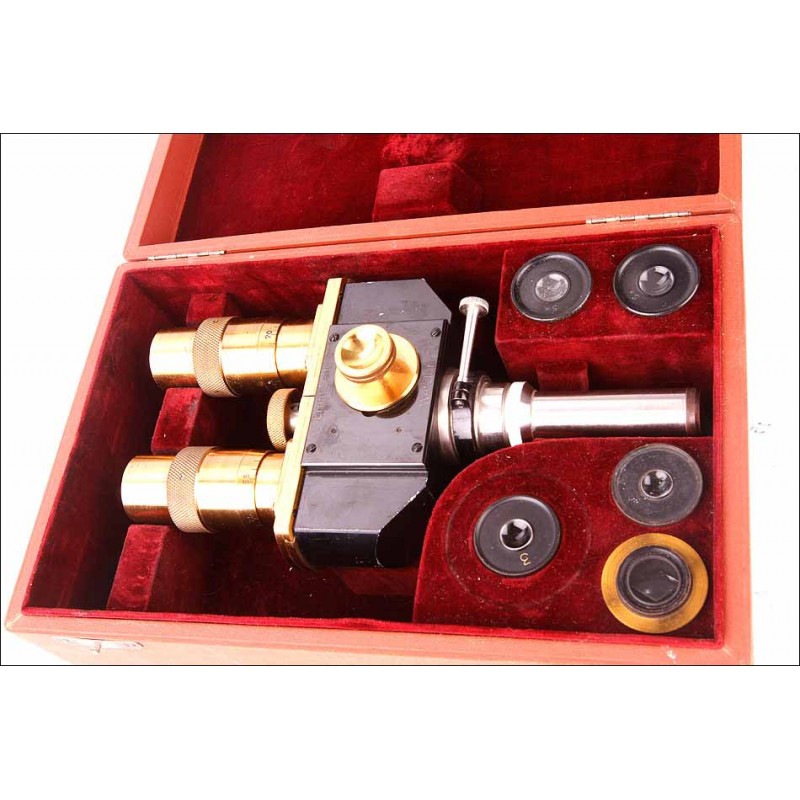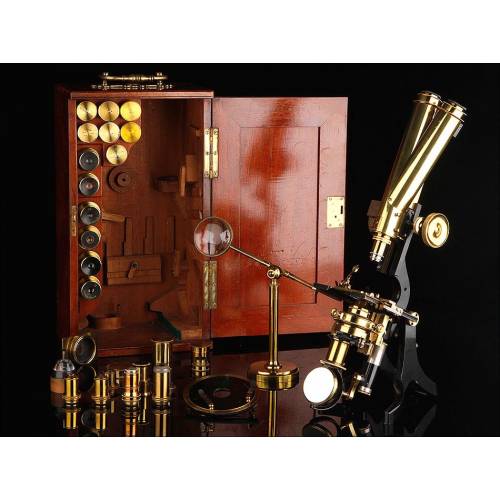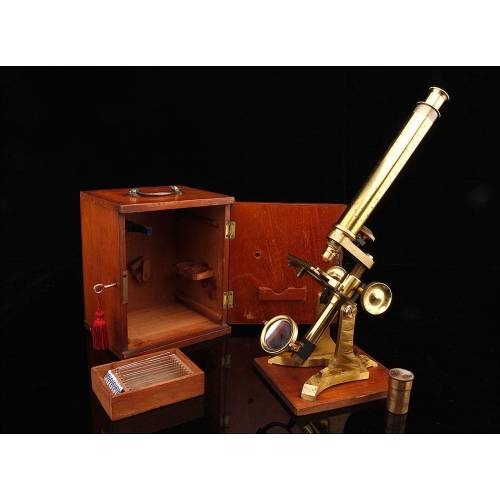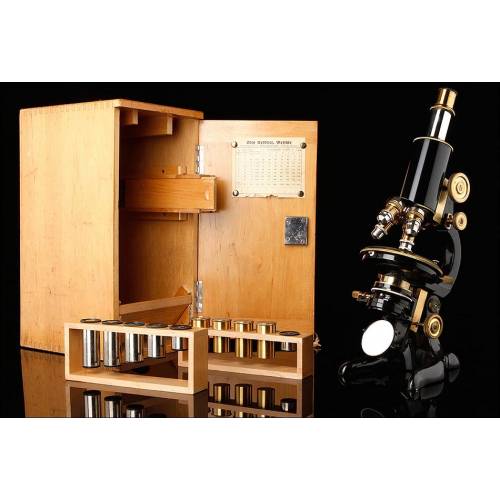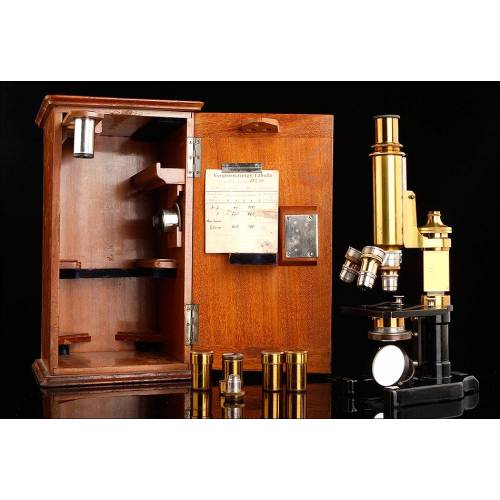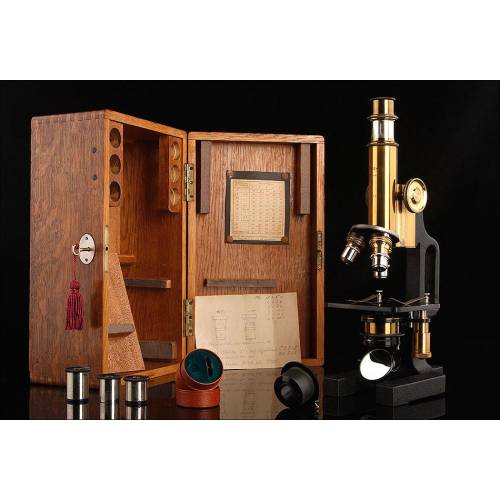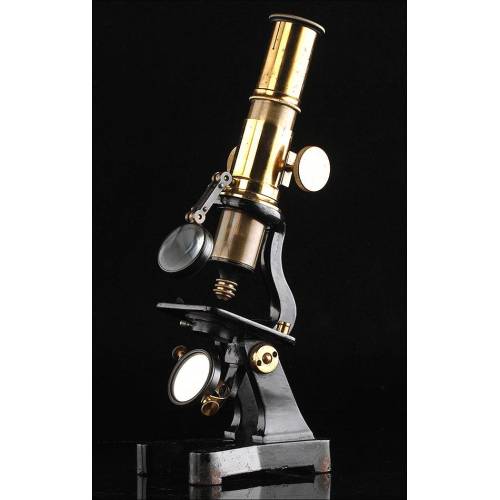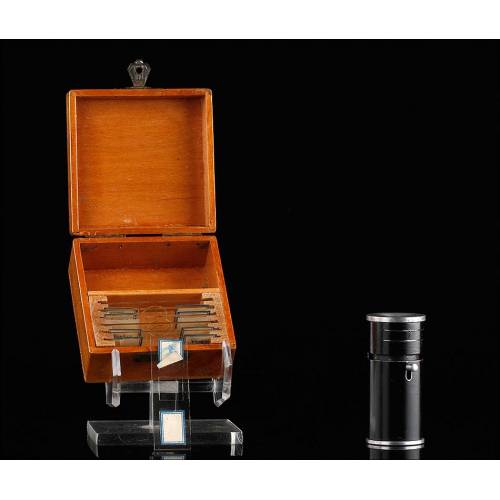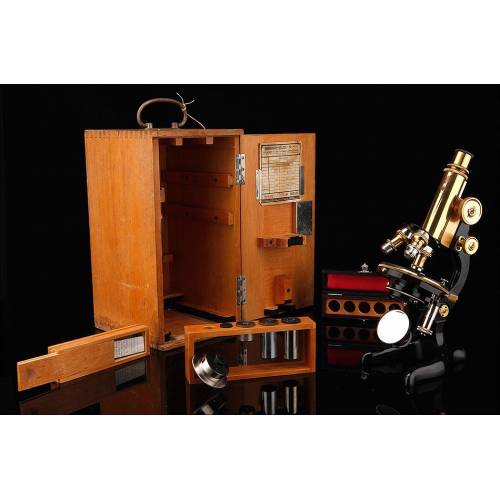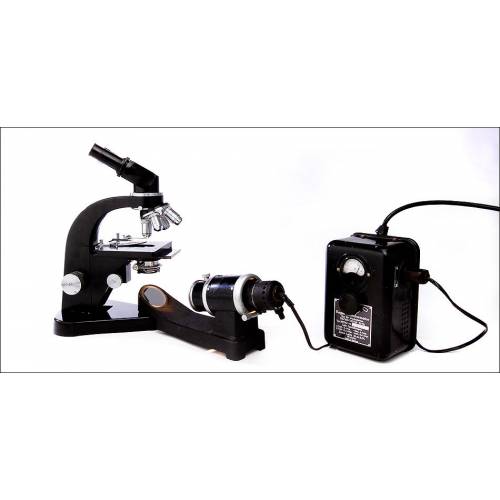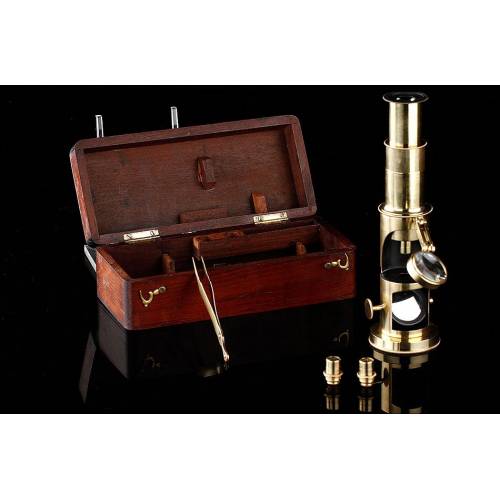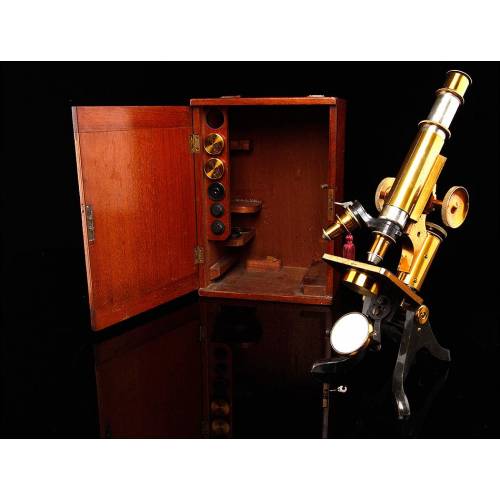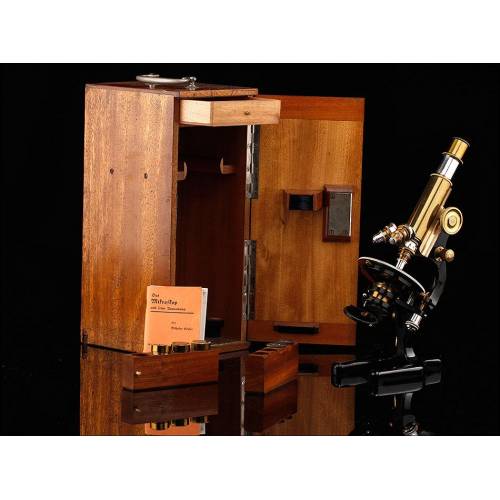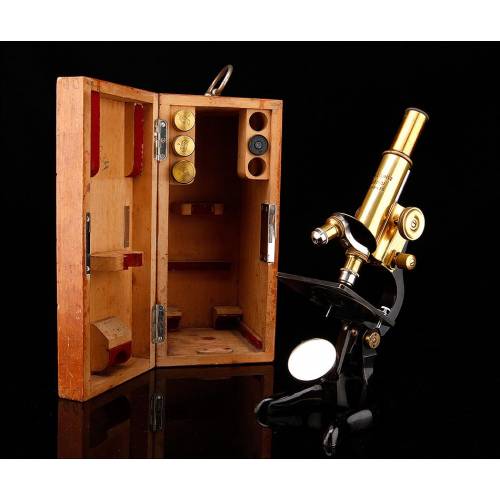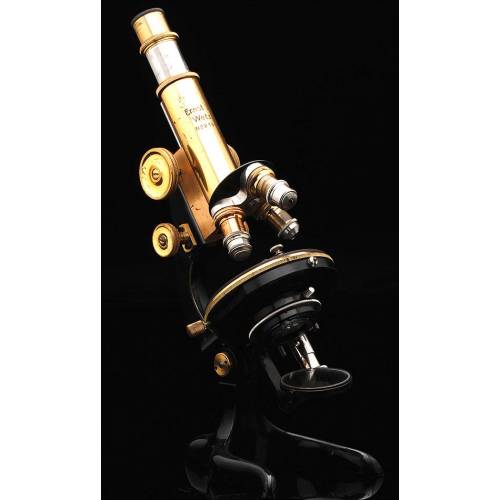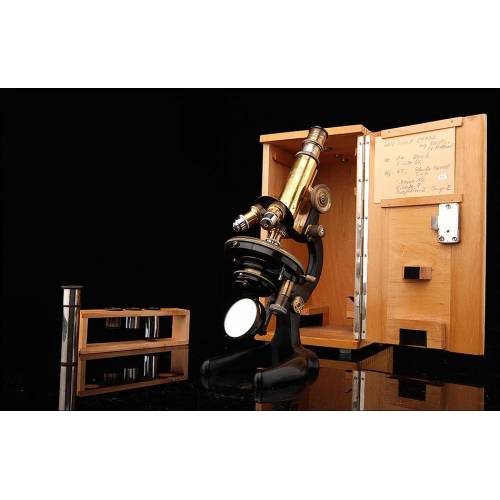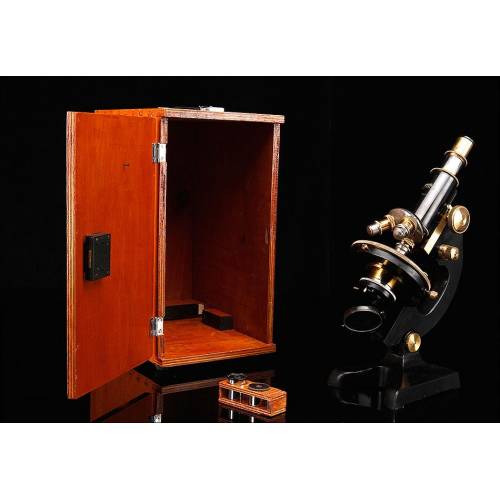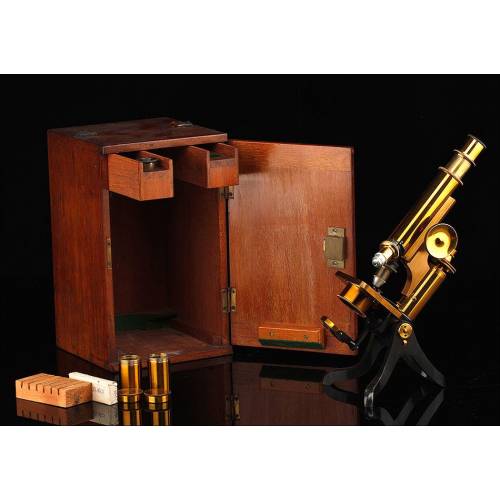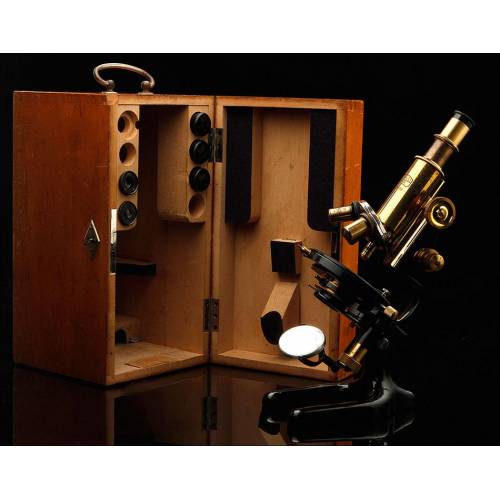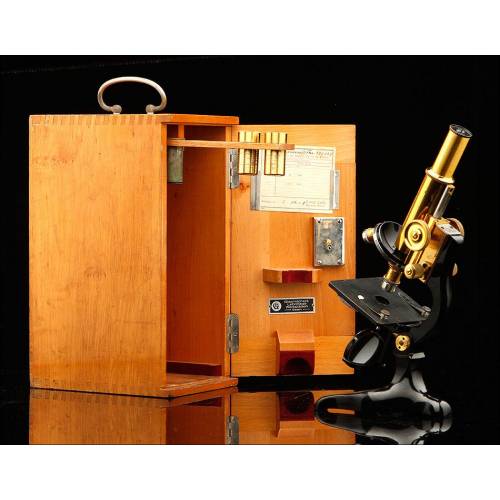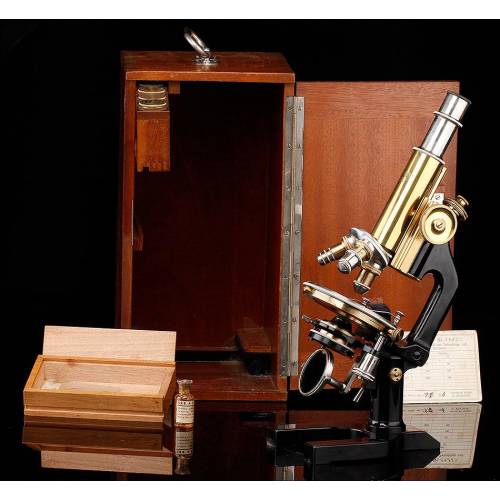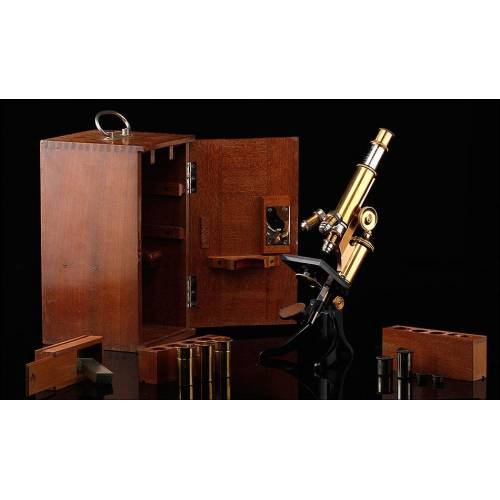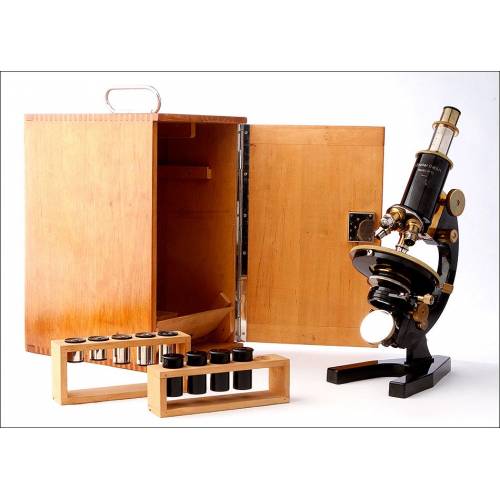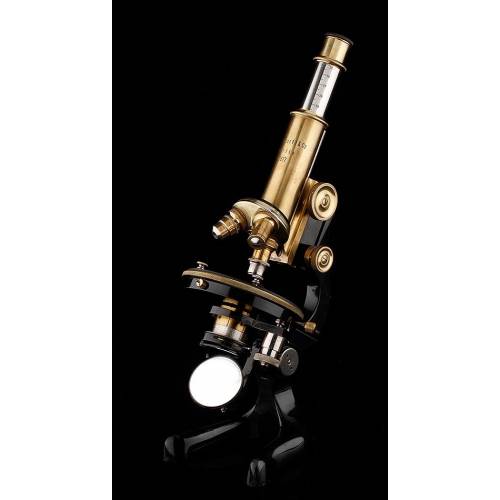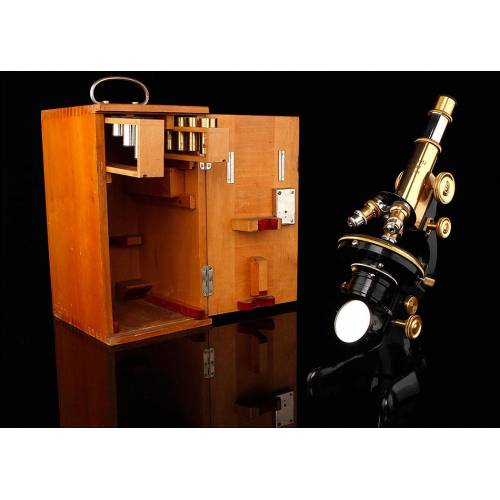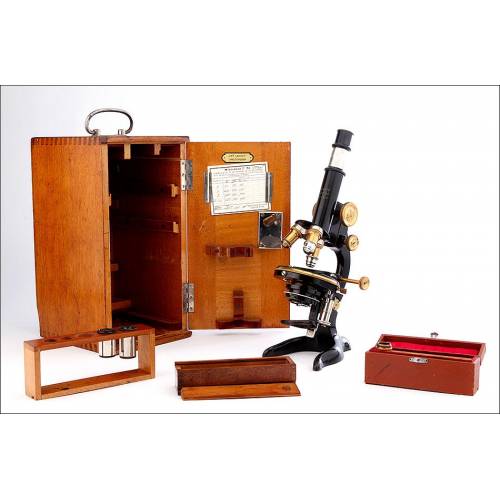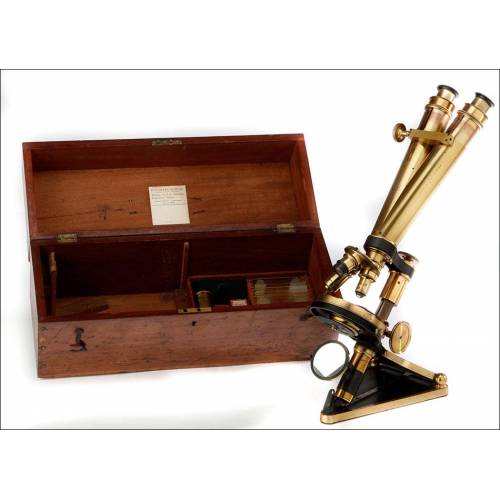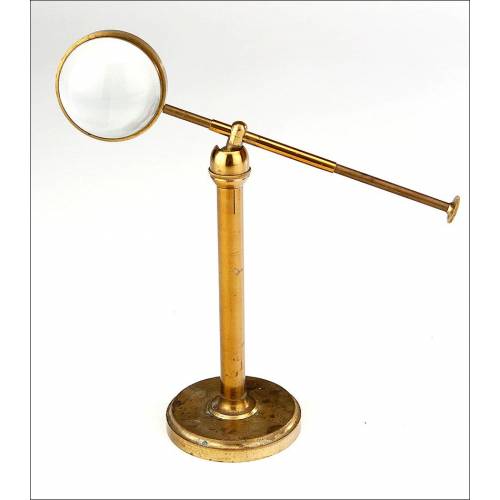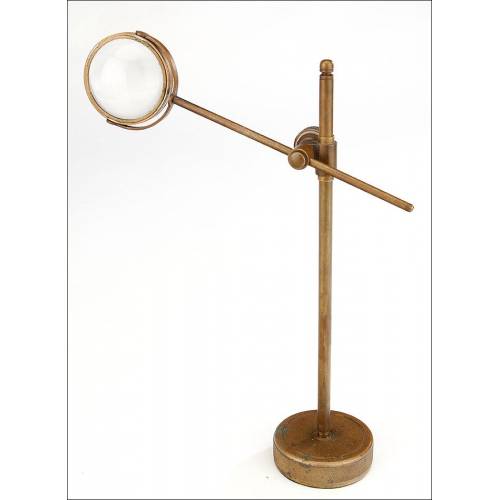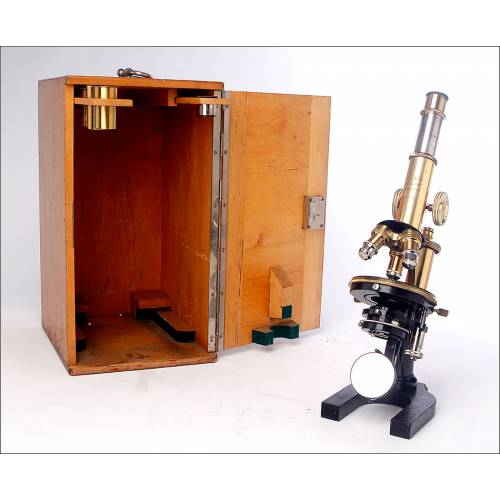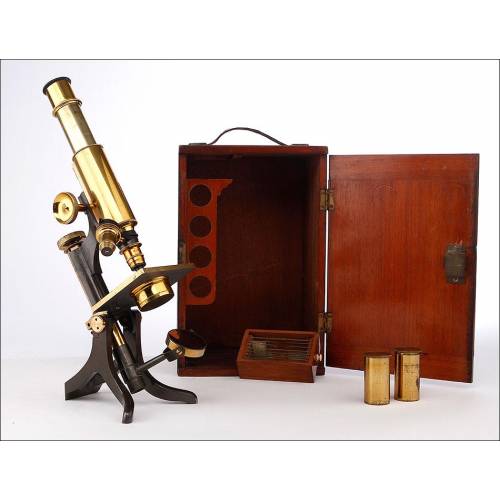B-856
Antique binocular converter for use with Leitz Wetlzar microscopes. 1910
Impressive Leitz Wetlzar binocular converter to convert monocular microscope to binocular. Good condition.
Sold!
Stunning binocular converter signed by Ernst Leitz Wetzlar, desgned to turn a monocular microscope into a binocular one. The viewer was made in Germany in the early 20th century (1910-20) and is in really good condition. All its component parts and pieces are original from the period and remain in perfect working order, making it possible to attach it to a standard microscope. This instrument comes in its original case with an extra eyepiece set, also wonderfully preserved. The case is signed by Ernst Leitz Wetzlar. The converter is made of black-enameled cast iron, golden brass and silvery metal. The brass is in striking condition, polished and shiny, and the black enamel shows off an even and flat surface. On the black finish we can see the manufacturers name clearly engraved in low-case lettering: Ernst Leitz Wetzlar. On the other hand, the storing case is quite an attractive item: it is outside covered of orange leather, the cover boasting a darker finish. The cover bears the manufacturers signature in golden lettering. Inside it is covered of red velvet, with different compartments that make it possible to store the viewers components perfectly. Beautiful and of high quality, this antique Ernst Leitz Wetzlar stereo viewer is a real collectors piece.Ernst Leitz Wetzlar History The beginnings of the famous optic material manufacturing company named Ernst Leitz Wetzlar can be found in the first half of the 19th century, when the mechanic and selft-taught mathematician Carl Kellner founded the Carl Kellner Optisches Institut in Wetlzar, Germany. After his early death his widow maintained the business, and in 1864 the mechanical engineer Ernst Leitz entered the company. Just five years later, Leitz took control of the firm and changed its name for Ernst Leitz Wetzlar. Leitz led the company to success after introducing improvements such as serial production, raising sales volume rapidly after 1871. Leitz microscopes included technical improvements that increased their quality; by the late 19th century the company already had a worldwide reputation. Ernst Leitz died in 1920 and the leadership of the firm passed to his son. As well as for their microscopes and optic material, Leitz became hugely famous for their famous Leica cameras (abbreviation of Leitz Camera).

